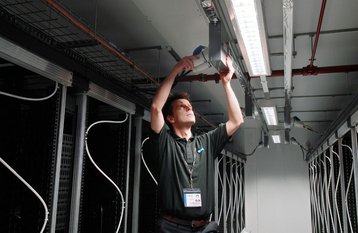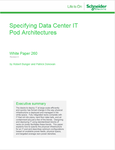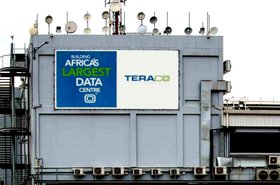Containment (separation of hot and cold air) has led to some of the most promising measures in energy efficiency for data centers. Now, most data center colocation providers require customers to install containment specifically for their facility.
Let's explore the various containment strategies available to help you reap the maximum benefits for your business.
Contain yourself
The implementation of a containment system will lower the power usage effectiveness (PUE) which directly leads to monetary savings. For example, if a 1MW (IT capable load) data center with a $.10 kWh lowers its PUE from 2.0 to 1.5 there will be a potential annual power savings of 25 percent, totaling $350k+. To realize optimal benefits, installing Cold-Aisle Containment (CAC) or Hot-Aisle Containment (HAC) are industry best-practices. Let’s take a deeper look at each method.
Cold-Aisle Containment (CAC) involves enclosing the cold aisles within the data center. Cold supply air is then delivered directly to each cold aisle, then matched to server airflow requirements with proper controls. The physical barrier (i.e. plastic curtains, glass, or plexiglass) is added to the ends and top of the cold aisle. This transparent barrier enables the cold aisle to remain visible for monitoring with existing room lighting. One advantage of CAC is that it can be used with raised floor supply plenums or with overhead ducted supply with no raised floor. A general complaint with a CAC system is that any “uncontained” space tends to be warm, giving a false impression that there may be cooling issues.
Hot-Aisle Containment (HAC) encloses the hot aisles within the data center. Discharge air from IT equipment enters the enclosed hot aisle and is returned directly to cooling equipment through a ceiling plenum or return ductwork. The cool supply air is introduced into the room through a raised floor or directly into the general space from CRAH units. An advantage of HAC is that the general data center space remains cool, eliminating visitor perception that there are hot spots.
Operational Challenges: Containment does add complexity to the overall operation of a data center. For a proper containment strategy in a new data center, critical decisions need to be made early in the white space design. Operators must consider how they will maintain containment as the site evolves. Another critical item to consider is the working conditions within extremely hot contained aisles.
The Benefits: Both CAC & HAC deployments provide tangible benefits for data center operators, including:
- Eliminate hot spots
- Support 4x higher heat and power densities (6kw to 30+kw)
- Effectively utilize 100 percent of supplied air and reduces chilled air waste
- Increase chiller efficiency or economization through higher set points
- Save energy 20-40 percent on cooling costs
- Short ROI (Typically, 1 year, less than 2 years)
- Improve appearance
- Extend the life of IT and cooling equipment
Final thoughts: Whatever your data center strategy, it’s important to spend the time to properly design and build your white space to best leverage the benefits of containment.





